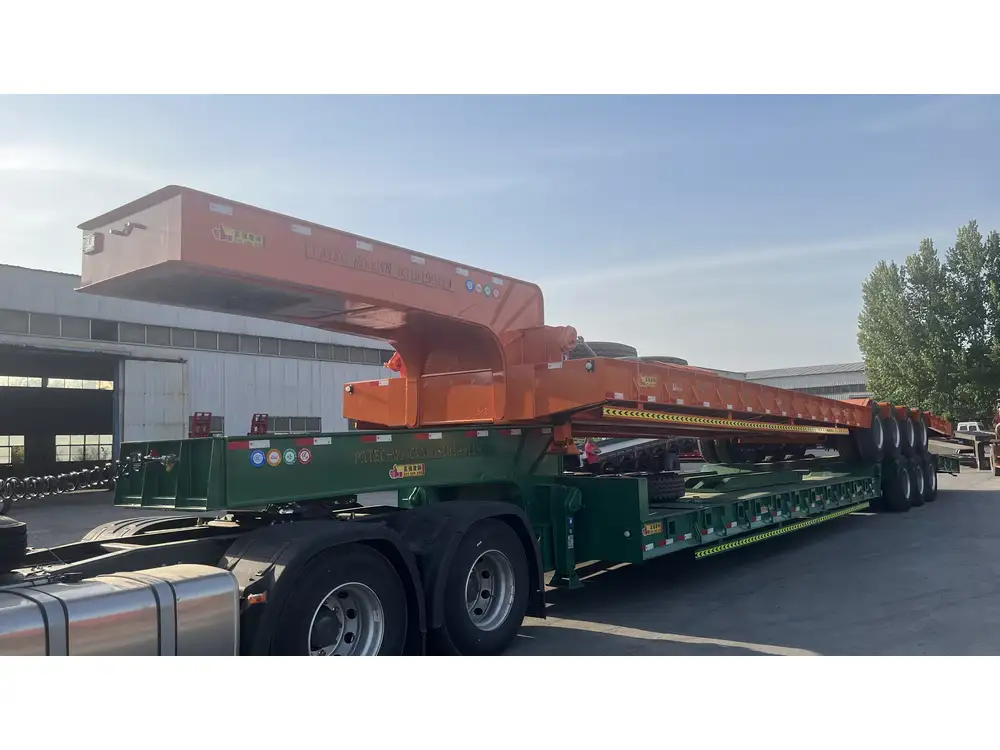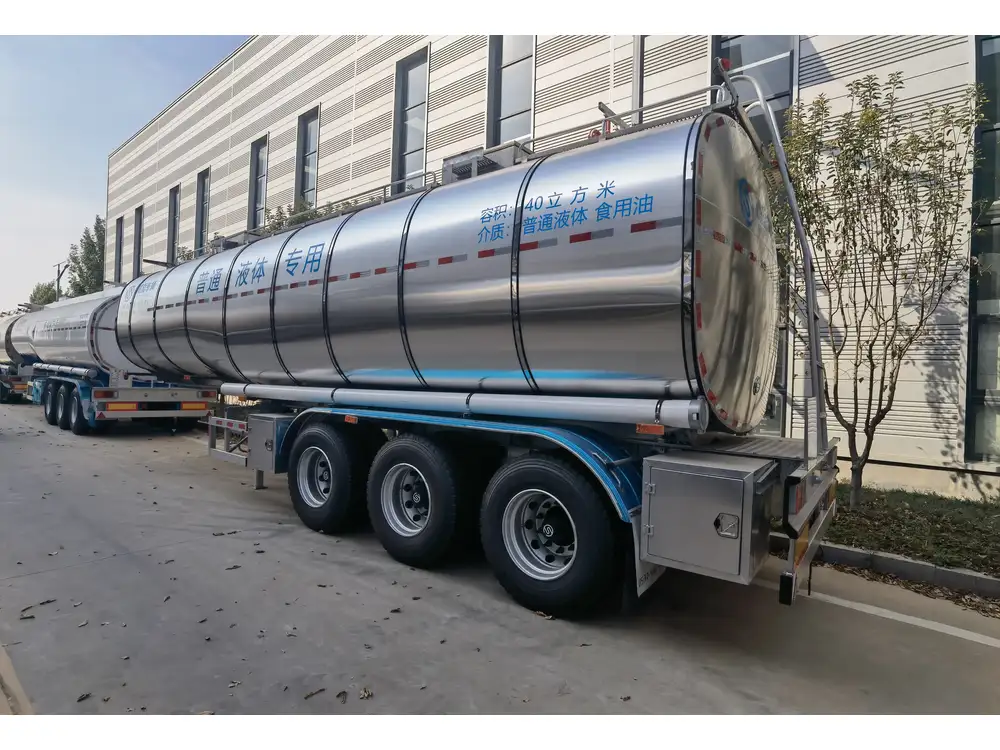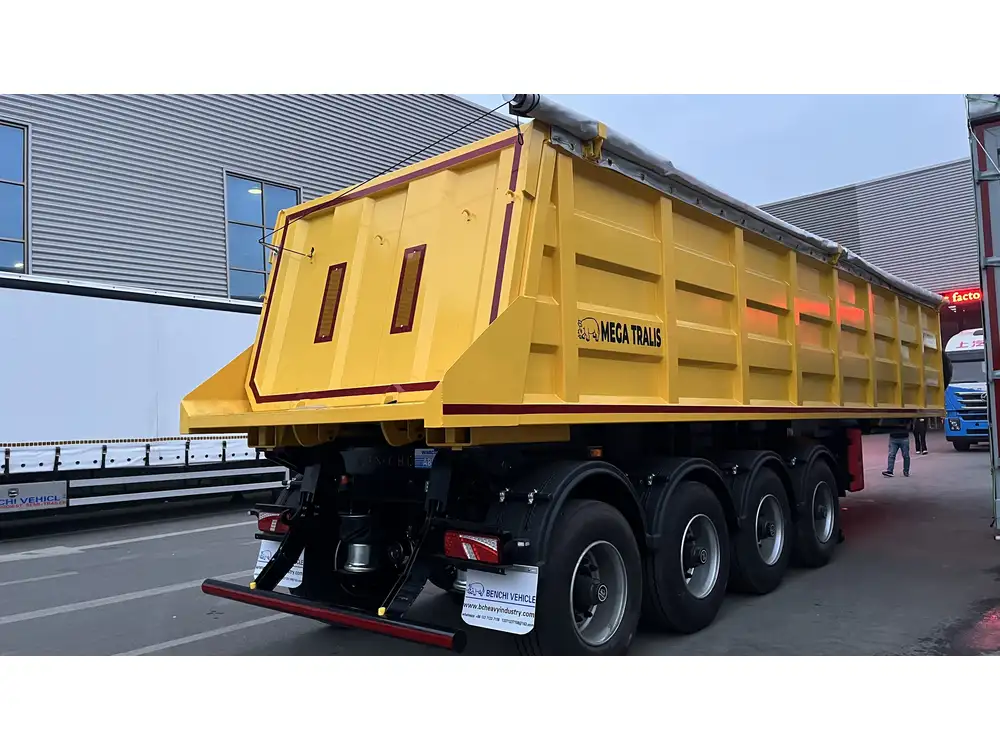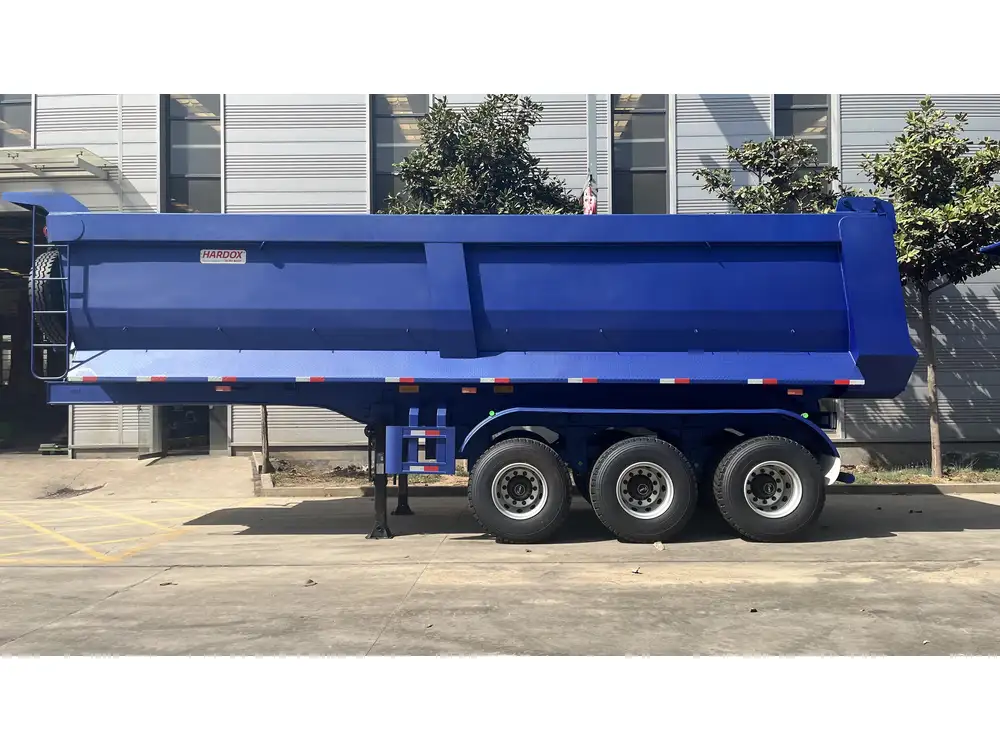The world of logistics and transportation hinges on the functionality and utility of semi-trailers. These robust vehicles are more than mere containers; they are the engine driving our global trade economy. In this article, we delve into the intricacies of semi-trailers, including types, specifications, applications, and maintenance considerations, aiming to provide detailed insights that are essential for both industry veterans and newcomers alike.
What Is a Semi-Trailer?
A semi-trailer is a type of trailer that does not have a front axle. It is designed to be towed by a tractor unit, which is equipped with a fifth wheel coupling. This design allows for greater stability, increased cargo capacity, and improved maneuverability. Semi-trailers are critical in the transportation of goods across various industries, including retail, agriculture, construction, and more.
Key Components of a Semi-Trailer
- Chassis: The framework that supports the entire structure.
- Axles: Typically, two to three axles are used, depending on the load capacity.
- Suspension System: The system that ensures a smooth ride by absorbing shocks.
- Trailer Brakes: Electric, hydraulic, or air brakes that enhance safety.
- Fifth Wheel Coupling: Connects the semi-trailer to the tractor unit.

Types of Semi-Trailers
The versatility of semi-trailers is reflected in their myriad types, each tailored to specific cargo needs. Below are some common varieties:
1. Flatbed Trailers
- Description: Open trailers without sides or a roof.
- Best for: Transporting heavy and bulky goods like machinery or construction materials.
2. Reefer Trailers
- Description: Refrigerated trailers designed to transport perishable goods.
- Best for: Food, pharmaceuticals, and other temperature-sensitive products.

3. Dry Van Trailers
- Description: Enclosed trailers that provide protection from the elements.
- Best for: General freight, electronics, apparel, and other non-perishable goods.
4. Tanker Trailers
- Description: Constructed to carry liquids such as fuel, chemicals, and food-grade liquids.
- Best for: Specialized transportation needs involving hazardous or bulk liquids.
5. Lowboy Trailers
- Description: Designed for transporting heavy equipment due to their low deck height.
- Best for: Construction equipment and oversized loads.

6. Step Deck Trailers
- Description: Have a lower deck height compared to flatbeds, allowing for a greater range of cargo without exceeding height restrictions.
- Best for: Over-dimensional loads that are too high for typical trailers.
Semi-Trailer Specifications
When selecting a semi-trailer, several specifications must be considered to ensure that it meets the demands of the intended application:
| Specification | Description |
|---|---|
| Length | Commonly ranges from 28 to 53 feet. |
| Width | Generally 8.5 feet, with some variations allowed. |
| Height | Varies, with standard heights around 13.5 feet. |
| Weight Capacity | Can range from 20,000 to 80,000 pounds, depending on the type and configuration. |
| Material | Aluminum, steel, or composite materials. |
Understanding Load Ratings
Every semi-trailer has load ratings specified by the manufacturer. It’s essential to adhere to these ratings to avoid overloading, which can lead to safety hazards, including tire blowouts, brake failure, and swaying.

Important Factors Influencing Selection
- Cargo Type: The nature of the goods being transported dictates the type of trailer best suited for the job.
- Regulatory Compliance: Considerations must be given to legal load limits and the dimensions allowable for road transport.
- Durability: Materials used in manufacturing affect longevity, maintenance costs, and weight capacity.
The Semi-Trailer Market Landscape
The demand for semi-trailers is growing, driven by several factors, including global trade expansion and increasing e-commerce activities. As a consequence, manufacturers are continuously innovating, enhancing efficiency, and adhering to stricter safety regulations.
Trends Shaping the Future of Semi-Trailers
Sustainability Initiatives: With growing awareness of environmental issues, manufacturers are developing more sustainable trailer options that reduce emissions and improve fuel efficiency.
Technological Advancements: The integration of IoT devices is revolutionizing the industry. Smart trailers equipped with tracking systems provide real-time data on location, temperature (for reefers), and load status.
Customization and Modularity: Increasing demands for bespoke solutions are leading manufacturers to adopt modular design principles to cater to specific client needs.

Global Semi-Trailer Manufacturers
| Manufacturer | Headquarters | Key Offerings |
|---|---|---|
| Wabash National | Lafayette, IN | Dry vans, flatbeds, reefers |
| Utility Trailer | California | Refrigerated, dry vans |
| Great Dane Trailers | Savannah, GA | Various types including lowboys |
| Fruehauf | Michigan | Custom-built trailers |
Maintenance of Semi-Trailers
Proper maintenance of semi-trailers is crucial for longevity, safety, and efficient operation. Below, we outline key maintenance activities:
Routine Inspection Checklist
- Tires: Check for appropriate inflation, tread depth, and wear.
- Brakes: Ensure all brakes are functioning efficiently and are properly aligned.
- Lights: Verify all lights are operational.
- Coupling System: Inspect the fifth wheel for lubrication and any signs of wear.
- Suspension: Regular checks for any irregularities or damages in the suspension system.

Common Maintenance Tasks
| Task | Frequency | Details |
|---|---|---|
| Tire Rotation | Every 5,000-10,000 miles | Equalizes wear and extends tire life. |
| Brake Inspection | Every 6 months | Ensures optimal stopping power and safety. |
| Wheel Alignment | Annually | Reduces tire wear and improves fuel efficiency. |
Key Considerations for Purchasing a Semi-Trailer
Investing in a semi-trailer requires careful consideration. Here are critical factors to analyze:
- Budget: Both initial purchase price and long-term operational costs must be evaluated.
- Usage Needs: Determine if the type of trailer fits the expected cargo and frequency of transport.
- Warranty and Support: Gauge the manufacturer’s warranty and available customer service or parts support.
- Resale Value: Consider the potential depreciation and resale value after several years of ownership.
Conclusion: The Essential Role of Semi-Trailers in Transportation
Semi-trailers play an indispensable role in the logistics sector, acting as a bridge between manufacturers and consumers across the globe. With a wide range of designs tailored to various cargo types, investing in the right semi-trailer can optimize transportation efficiency and enhance operational effectiveness.
As industry dynamics continue to evolve with technological advancements and regulatory changes, staying informed about the latest trends and maintenance practices is not just beneficial; it is essential for success. Engage with your semi-trailer manufacturer and logistics partner to make educated choices that reflect your business needs and growth aspirations.
By understanding the nuances of semi-trailers, stakeholders in the transportation industry can confidently navigate their purchasing decisions and contribute to more efficient logistics solutions, ultimately enhancing the journey goods take from origin to destination.



